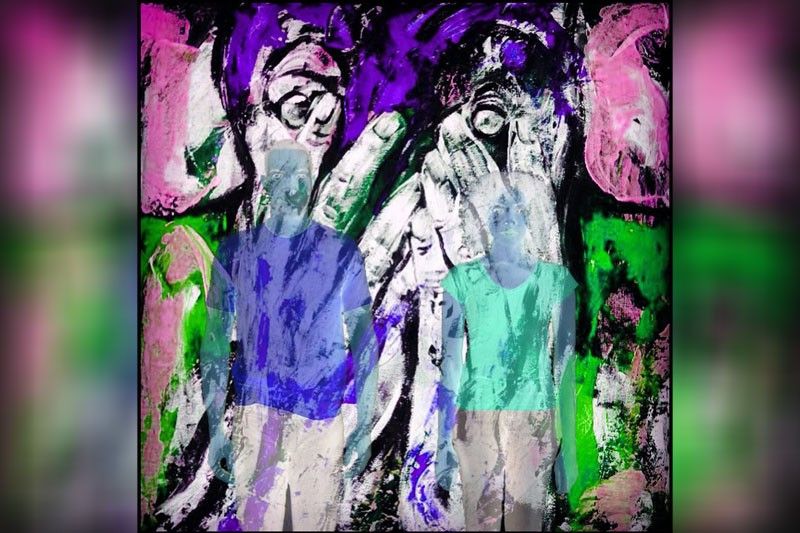In ‘new normal’ medicine, can a gadget heal our hearts and minds?

One of the reasons for increased anxiety and depression in this pandemic,” begins psychiatrist Dr. Dulce Lizza Reyes-Sahagun, “is the isolation and loneliness.”
I had been wondering about my feelings of loneliness during the lockdown. To keep the feelings at bay, I thought them away with the fact that I had recently lost my Mom, moved residences and was now living on the opposite side of town from my family.
“You are not alone in your feelings,” Dr. Sahagun assures me. “We have often said people are social beings and all of a sudden they are thrust into a situation where distancing is the norm. Go figure.”
Gadgets: The new normal
During these days of lockdown, psychiatrists have found a way to reach out to their patients with the help of a gadget. With the use of a cellphone or computer, what is now the “new normal” in psychiatry is that they are able to treat an ailment that disturbs the heart or mind — something that was not thought of as possible in the past.
“Psychiatry is face-to-face in its treatment of patients,” explains Sahagun, “yet there are so many cases of mental health problems, and psychiatrists have to reach out as much as they can to help, listen to and diagnose their patients now.”
It is not an easy task. But with the help of video calls, the psychiatrist can see and hear their patients and gauge their body language in order to diagnose and treat them better.
“Technology is the means by which humans modify the world,” Sahagun shares. “From the pre-COVID era, technology seemed so cold. You operate a gadget, get information fast and put the world at your fingertips, but that was bereft of the human touch — a healing touch.”
I am not the touchy-feely type and social distancing has been part of my life for the last 50 years. I have also considered myself a loner for the most part of my life.
But last year that changed, when my mother, whom I had been taking care of for the last 20 years since my father passed, went ahead, too. And all of a sudden I felt alone — truly alone.
And then bang! Lockdown.
Today, I realize that the Zoom technology and its many variations might be able to reach close to where our hearts are. I used to think that nothing could replace a touch or a hug — the language of touch used to know no equal.
“Technology at this time can be good for all of us,” Sahagun adds. “A K-drama is always a good choice or Zoom for a party to keep us entertained and connected.”
It is also true that with this pandemic, the world has become smaller and more intimate. And we can thank technology in its many forms for that.
Many people have said that this time has made them see the importance of the people who truly matter in their lives, whether they are near or far. Something that because of our busy lives in the past we had no time for.
“I attended a class reunion with people from all over the world,” she adds. “It lasted three hours and we had fun. The world has become smaller and the company of people nearer with technology.”
So there is a positive side to this technological connection, if you will, and it is not all that cold. We just have to learn to embrace it rather than try to fight to keep it at bay.
There will always be problems with what we face in life, but at this point we have no choice and we need to trust technology and the people behind it.
“At the Ateneo school of medicine and The Medical City, technology has been used to keep patients in touch with their families,” adds Sahagun. “And that has made all the difference in their healing.”
In today’s new normal, technology has taken center stage.
While it is true that there is much uncertainty in the world today and its impact is keenly felt by people under 25, Sahagun believes that perhaps the impact on mental health knows no age because jobs have been lost or put on hold. And that kind of uncertainty frightens us all.
“The work-from-home arrangement is not for all,” she adds. “But all have had to adjust. WFH has means adapting to these new technologies, changing forms of communication and resisting distractions that come with being at home.”
“Can technology replace the human touch?” I ask.
“In this time of the pandemic, everything has been fast-tracked,” she replies. “Telemedicine and telepsychiatry, in particular, have become the wave of the future.”
This latest disruptive communication technology is set to revolutionize the practice of medicine. The pandemic has caused the most dramatic change in how medical care is delivered.
“The genie will never go back into the bottle,” Sahagun adds. “The pandemic made people more dependent on and comfortable with the screen, versus face-to-face contact at work and in their social lives. The switch in psychiatry office practice to telepsychiatry has been incredibly smooth and rapid.”
So, technology can be used to bring about true healing after all. The challenge for “new normal” doctors is to be able maintain a strong, uninterrupted therapeutic connection with their patients, which is crucial to effective intervention and eventually, healing.



















